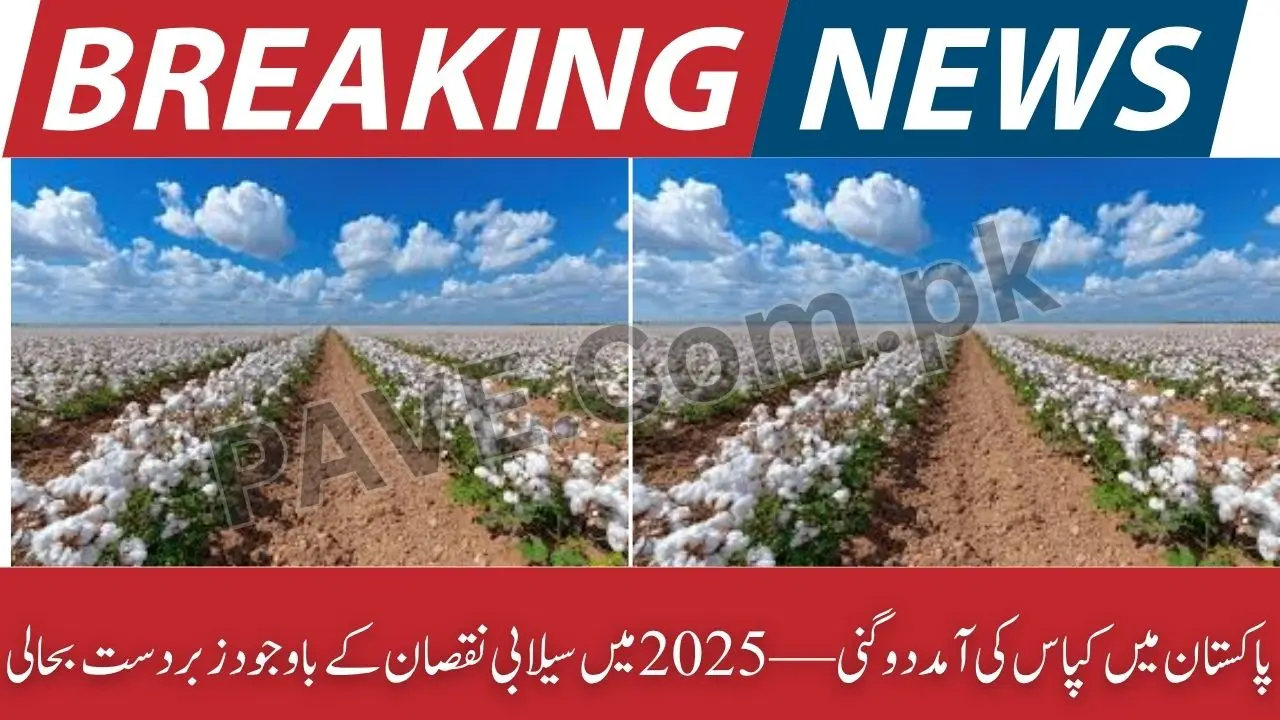Breaking: Pakistan Cotton Arrivals Double in 2025 Despite Flood Damage
Pakistan Cotton Arrivals Double in 2025 Despite Flood Damage, marking a powerful comeback for the country’s agriculture and textile industries after one of the toughest monsoon seasons in years. Despite extensive flooding in Sindh and South Punjab that threatened vast cotton fields, new data from Arif Habib Limited shows arrivals reaching 2.06 million bales in September 2025 — up 118% year-on-year and nearly double from october. This surge underscores Pakistan’s agricultural resilience and the textile sector’s rapid recovery, signaling renewed export momentum heading into FY26.
The figures indicate a significant turnaround for Pakistan’s agriculture and textile industries, which together employ millions and account for over 60% of national exports. Despite climatic disruptions, farmers and textile producers have managed to stabilize supply chains through improved seed technology, government-backed incentives, and strong international demand.
Cotton Arrivals Cross 4 Million Bales in First Quarter of FY26
During the first quarter of the fiscal year 2025–26 (1QFY26), Pakistan recorded 4.06 million bales, up 55% year-on-year compared to the same period last year.
Agricultural economists attribute this growth to better field management, climate-adaptive seed varieties, and state-level intervention through the Punjab High-Tech Agriculture Program 2025, which provided subsidies for fertilizers, mechanization, and pest-resistant seeds.
Sindh and South Punjab — areas hardest hit by monsoon floods — saw slower recovery, but central and northern cotton belts compensated with record yields due to favorable late-season weather and improved irrigation management.
Imports Surge as Textile Demand Expands
While domestic production has improved, cotton imports have also surged, reflecting the strength of Pakistan’s textile export revival.
- September 2025 imports: 351,000 bales
- Increase over September 2024: +168%
- Import bill: $137 million (+137% YoY)
For the first quarter of FY26, total cotton imports reached 1.01 million bales worth $1.7 billion, marking a 63% jump in value over the same period last year.
Analysts note that this import surge stems from higher global orders received by Pakistani exporters. Demand from European and U.S. retailers has been particularly strong ahead of the 2025–26 winter season, encouraging local mills to ramp up production capacity.
Data Snapshot – Cotton Arrivals vs. Imports (AHL Report)
| Metric | Sep-25 | YoY % (Sep-24) | MoM % (Aug-25) | 1QFY25 | YoY % (1QFY26) |
|---|---|---|---|---|---|
| Total Arrivals (000 bales) | 2,060 | +118% | +97% | 2,620 | +55% |
| Imports (000 bales) | 351 | +168% | +89% | 619 | +63% |
| Import Value (USD million) | 137 | +137% | +74% | 1,048 | +63% |
Source: Arif Habib Limited, Textile Sector Overview (Sep 2025)
The data underscores how both domestic production and foreign sourcing are playing critical roles in maintaining textile sector stability.
Imports Trend: Rising Value and Volume
AHL’s analysis further reveals that cotton import values peaked in May 2025 at $575 million, reflecting the impact of high global prices and shipment backlogs.
Between September 2023 and September 2025, Pakistan’s monthly cotton import bill fluctuated between $68 million and $630 million, showing dependence on external markets to meet local demand.
The yellow bar and red line graph in the report highlights parallel movements — import volumes (in 000 bales) and import value (in USD million) — both rising sharply during global demand cycles, then easing as local arrivals picked up.
Textile Exports Regain Momentum
Pakistan’s textile exports, which had stagnated during FY25 due to energy shortages and global inflation, have finally regained momentum.
During the first quarter of FY26, export volumes rose 4%, while export earnings climbed 7.3% YoY.
Industry insiders report that many spinning and weaving units in Faisalabad, Karachi, and Multan are now operating near full capacity.
Exporters credit this improvement to more predictable gas supply, currency stability, and recovery in demand from Western buyers.
APTMA (All Pakistan Textile Mills Association) officials say maintaining competitive energy tariffs and ensuring steady foreign exchange access will be crucial for keeping up export growth.
Expert Insights: “Resilience Despite Floods”
Industry experts believe that Pakistan’s cotton farmers have shown exceptional resilience in coping with climatic disasters.
“Farmers in Punjab and Sindh have learned to manage floods and pests through better technology and soil monitoring,”
says Dr. Naeem Iqbal, an agriculture economist at the University of Agriculture, Faisalabad.
He added that mechanized picking machines, supported by provincial programs, helped reduce post-harvest losses by nearly 10%.
Meanwhile, Arif Habib’s senior analyst, Farhan Ahmed, noted:
“This year’s performance reflects a smarter supply chain. Imports were timed well, ensuring mills didn’t stop even during floods — a big shift from past years.”
Government’s Cotton Revival Plan 2025–28
In response to these trends, the federal government has rolled out the Cotton Revival and Value Chain Development Plan (2025–28). The initiative focuses on boosting production and reducing import reliance through:
- Seed subsidies and certified seed distribution;
- Promotion of climate-resilient varieties;
- Development of textile export clusters under the SIFC;
- Continuation of zero-rated tax policy for exporters;
- Investment in agri-research and extension services; and
- Training farmers in precision irrigation and pest management.
Officials expect that by FY2027, Pakistan could achieve 10 million bales in domestic production, cutting import dependency by at least 30%.
Challenges Still Remain
Despite progress, several structural challenges persist:
- Climate Volatility: Erratic weather patterns continue to affect yields, particularly in Sindh’s low-lying districts.
- Input Costs: Rising fertilizer, fuel, and pesticide prices are squeezing farmer margins.
- Energy Constraints: Textile units still face periodic gas shortages, affecting production efficiency.
- Global Competition: Rivals like Bangladesh and Vietnam are expanding garment exports faster due to lower labor costs.
To counter these issues, stakeholders call for long-term policy consistency, improved research investment, and better flood management systems.
Outlook: Pakistan Cotton Arrivals Double in 2025 Despite Flood Damage
The surge in cotton arrivals and strong export performance point toward a sustainable recovery trajectory for Pakistan’s agriculture and manufacturing sectors.
If favorable policies continue, analysts expect FY26 to record the highest cotton production and textile export growth in five years.
The next steps include modernizing ginning facilities, expanding farmer insurance, and integrating digital monitoring for crop forecasting — all crucial to protect the gains made in 2025.
As Pakistan’s cotton fields bloom again, they symbolize not only economic revival but also resilience in the face of climate adversity.







